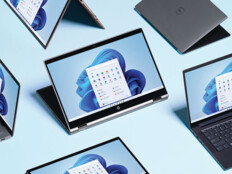Machine Learning Could Help Detect Diseases Earlier, New Study Finds
There might be a lot of hype around what machine learning and artificial intelligence can do for healthcare, but a new study could showcase the real-life potential of the technology for early disease detection.
The study, conducted by Microsoft and Duke University and published in late April in Nature’s npj Digital Medicine, showcases the power of trained machine learning models to automatically detect neurodegenerative disorders by using information from patient interactions with search engines.
The research is specific to Parkinson’s disease but could be adapted to fit similar neurodegenerative disorders, such as Alzheimer’s disease.
SIGN UP: Get more news from the HealthTech newsletter in your inbox every two weeks!
Mouse Tracking and Machine Learning Pair to Root Out Disorders
With Parkinson’s disease impacting nearly 1 percent of people over age 60, it is the second-most prevalent neurodegenerative disorder, the researcher authors note in the study’s abstract.
“The physical symptoms of the disease generally appear slowly over time, and often include tremors, rigidity and slowness of movement,” the authors note in the abstract. As of now, diagnosing the disease depends on the clinical judgment of the neurologist, who evaluates the “motor and non-motor manifestations of the disease” in each patient.
The study, however, set out to evaluate the way in which automatic tools could assess the motor function of patients and determine which patients may already have Parkinson’s or are at risk for it based on “mouse tracking data collected during people’s interaction with a search engine.”
“Such tools can complement physician diagnosis, introducing the potential for greater screening opportunities and for early diagnosis of the disease,” the authors note.
The tool is built on the idea that many technology companies are already capable of assessing medical conditions in online users based solely on their interactions with search engines or social media, such as keystrokes, mouse movement and other input signals. Most of this interaction data is already collected in an effort to assess better ways to design a website, but it can be put to medical use as well.
“These interactions can also be leveraged to reveal the underlying medical conditions of users, based on statistics collected from millions of customers,” the report notes.
While there are still several challenges around the robustness of data collected, particularly when it comes to data from users that already have Parkinson’s disease, researchers were encouraged by initial findings.
“Our results indicate that mouse tracking data can help in detecting users at early stages of the disease, and that both expert-generated features and unsupervised techniques for feature generation are required to achieve the best possible performance,” the report authors note.









